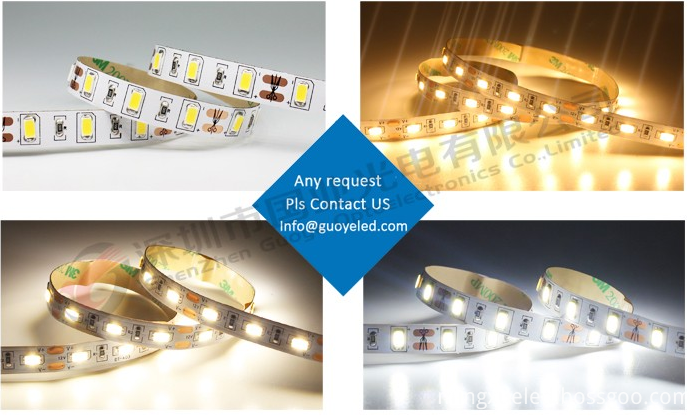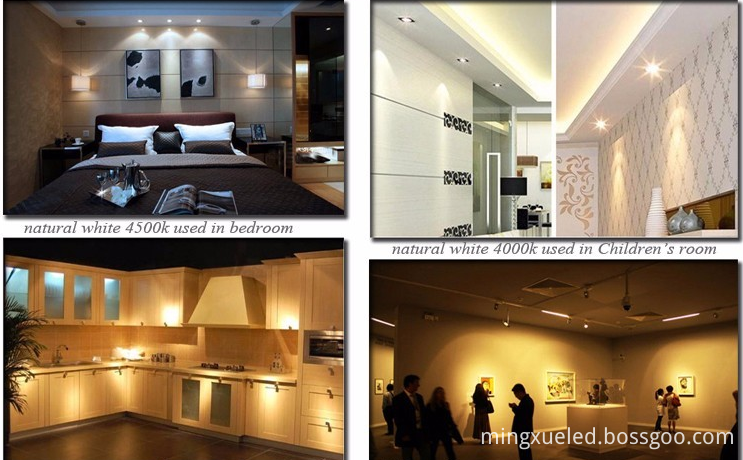Brief Discussion on Lightning Protection Design of Security Monitoring System
1. Introduction With the rapid popularization of security monitoring systems in the management of banks, traffic, communities, and warehouses, the possibility of monitoring system equipment being damaged by lightning strikes has greatly increased. The consequences may make the entire monitoring system malfunction and cause economic losses that are difficult to estimate.
In order to take effective lightning protection measures for the safety monitoring system and ensure the normal and reliable operation of the monitoring system, first of all, the main cause of the lightning damage caused by the lightning monitoring system and the possible way of lightning intrusion should be clarified, especially the outdoor monitoring equipment with serious lightning damage. On the basis of analyzing the causes of damage, correctly select and use the lightning protection device of the monitoring system equipment, and research and discuss the layout, shielding and grounding methods of signals and power lines. It can enable various security engineering companies to play a very good role in improving the anti-lightning capability of the monitoring system and optimizing the lightning protection level of the system.
2. The composition of the CCTV system and the causes of lightning damage
1. TV monitoring system (Closed Circait Televisiow, referred to as CCTV), generally consists of the following three parts:
Front-end part: It is mainly composed of black and white (color) camera, lens, gimbal, protective cover, bracket, etc.
Transmission part: Coaxial cables, wires, and multi-core wires are used to transmit video, audio, or control signals by overhead, underground, or laying along the wall.
Terminal part: mainly composed of picture splitter, monitor, control equipment, etc. 2. The cause of lightning damage of CCTV system: direct lightning: lightning strikes directly on the camera in the open air causing damage to the equipment; lightning strikes directly on the overhead cable and causes the cable to melt.
Lightning wave intrusion: When CCTV power lines, signal transmission or metal pipelines entering the monitoring room are struck by lightning or induced by lightning, lightning waves invade the equipment along these metal wires, causing potential differences to damage the equipment.
Lightning induction: When lightning strikes the lightning rod, a strong transient electromagnetic field will be generated around the down conductor. Monitoring equipment and transmission lines in an electromagnetic field will induce a large electromotive force. This phenomenon is called electromagnetic induction. When a charged thundercloud appears, the charges opposite to the thundercloud will be induced on the buildings and transmission lines below the thundercloud. This induced charge can reach 100kv on low-voltage overhead lines and 40-60kv on signal lines. This phenomenon is called electrostatic induction. Electromagnetic induction and electrostatic induction are called induction lightning, also called secondary lightning. The damage to the equipment is not as sharp as the direct lightning strike, but it is much more likely than the direct lightning strike.
3. Comprehensive lightning protection of CCTV system
1. Lightning protection of the front-end equipment The front-end equipment is installed in both outdoor and indoor situations. The equipment installed indoors is generally not subject to direct lightning strikes, but it is necessary to consider preventing lightning overvoltage from damaging the equipment, while outdoor equipment needs to be considered at the same time. Prevent direct lightning strikes.
Front-end equipment such as cameras should be placed within the effective protection range of the lightning receptor (lightning rod or other lightning conductor). When the camera is erected independently, the lightning rod is preferably 3-4 meters away from the camera. If there is difficulty, the lightning rod can also be erected on the support rod of the camera, and the down conductor can directly use the metal rod itself or choose Φ 8 galvanized round steel. To prevent electromagnetic induction, the power and signal wires of the camera along the pole should be shielded by metal pipes.
In order to prevent lightning waves from invading the front-end equipment along the line, appropriate lightning arresters should be installed on each line in front of the equipment, such as power lines (220V or DC12V), video lines, signal lines and PTZ control lines.
The power supply of the camera is generally AC220V or DC12V. If the camera is powered by a DC transformer, the single-phase power surge arrester should be connected in series or parallel to the front end of the DC transformer. If the transmission distance of the DC power supply is greater than 15 meters, a low-voltage DC surge arrester should also be connected in series.
The signal line has a long transmission distance and a low withstand voltage level. It is easy to induce lightning current and damage the device. In order to transfer the lightning current from the signal transmission line to the ground, the signal overvoltage protector must respond quickly. When designing the protection of the signal transmission line, the signal must be considered Parameters such as transmission rate, signal level, starting voltage and lightning flux.
The outdoor front-end equipment should have good grounding, the grounding resistance is less than 4 Ω, and the area with high soil resistivity can be relaxed to <10 Ω.
2. Lightning protection of transmission lines
The CCTV system mainly transmits signal lines and power lines. The power supply of the outdoor camera can be introduced from the terminal equipment or the power supply near the monitoring point.
The control signal transmission line and the alarm signal transmission line generally use core shielded flexible wire, which is erected (or laid) between the front end and the terminal.
GB50198-1994 stipulates that when the transmission part of the line is laid in urban suburbs and villages, it can be laid directly. When the conditions are not sufficient, the communication pipeline or overhead method may be used. At this time, the minimum distance between the transmission cable and other lines and other channels (see Table 1) and the minimum vertical distance between the transmission line and other lines (see Table 1) are specified. Table 2 )
Table 1 The minimum distance (m) of the common ditch (tunnel) between the cable and other lines (m) The minimum distance 220V AC wire 0.5 Communication cable 0.1 Table 2 The minimum vertical distance (m) of the cable and other lines shared by the pole Power line 2.51KV or less Power line 1.5 Broadcast line 1.0 Communication line 0.6
From the perspective of the lightning protection angle, the direct-buried laying method has the best lightning protection effect, and the overhead line is most susceptible to lightning strikes, and is destructive and has a wide range. For grounding, the suspension wires of overhead cables and metal pipes in overhead cable lines should be grounded. The signal source and power supply at the input of the intermediate amplifier should be connected to suitable lightning arresters respectively.
The buried laying of transmission lines cannot prevent the occurrence of lightning strike equipment. A large number of facts show that lightning strikes cause buried cable failures, which account for about 30% of the total failures. Even if the lightning strikes are far away, some lightning current will still flow in. cable. Therefore, the cable with shielding layer or the cable is laid through the steel pipe buried to keep the electrical connection of the steel pipe. It is very effective in protecting against electromagnetic interference and electromagnetic induction, mainly due to the shielding effect of the metal tube and the skin effect of lightning current. If it is difficult for the cable to pass through the metal pipe in the whole process, the metal pipe can be buried through the metal pipe before the cable enters the terminal and the front-end equipment, but the buried length should not be less than 15 meters. Connected.
3. Lightning protection of terminal equipment In the CCTV system, the lightning protection of the monitoring room is the most important, and it should be carried out from direct lightning protection, lightning wave intrusion, equipotential connection and surge protection.
The building where the monitoring room is located shall have lightning rods, lightning belts or lightning nets for preventing direct lightning. The direct lightning protection measures shall comply with the provisions of GB50057-94 on direct lightning protection.
Various metal pipelines entering the monitoring room should be connected to the grounding device to prevent lightning induction. When the overhead cable is directly introduced, a lightning arrester should be installed at the entrance, and the metal outer sheath of the cable and the self-supporting steel cable should be connected to the grounding device.
The monitoring room should be equipped with an equipotential bonding bus (or metal plate). The equipotential bonding bus should be connected to the building lightning protection grounding, PE line, equipment protection ground, antistatic ground, etc. to prevent dangerous potential differences. The grounding wires of various surge protectors (arrester) should be electrically connected to the equipotential bonding busbar with the shortest and shortest distance.
Since 80% of the high lightning strike potential is invaded from the power line, in order to ensure the safety of the equipment, the general power supply should be equipped with three-level lightning protection. Before the video transmission line, signal control line and intrusion alarm signal line enter the front-end equipment or enter the center console, corresponding lightning protection devices should be installed.
Good grounding is a vital part of lightning protection. The smaller the grounding resistance value, the lower the overvoltage value. When the monitoring center adopts a special grounding device, its grounding resistance shall not be greater than 4 Ω. When using a comprehensive grounding grid, the grounding resistance must not be greater than 1 Ω.
4. Conclusion There are many ways for lightning to damage the safety monitoring system. This article mainly analyzes the main causes of the lightning damage to the safety monitoring system and the possible intrusion routes, and introduces the lightning protection technology of the safety monitoring system accordingly. It should be noted that lightning protection is a relatively complicated issue. The design of lightning protection for a safety monitoring system depends not only on the performance of the lightning protection device, but more importantly, the monitoring must be considered before the design and construction of the monitoring system. For the geographical environment where the system is located, design appropriate cable layout, shielding, and grounding methods. In short, the lightning protection design should be considered comprehensively to obtain good results.
In the classification and security system of CCD cameras, the current image generation is mainly from CCD cameras. CCD is the abbreviation of charge coupled device (charge coupled deice). It can convert light into electric charge and store and transfer charge. It can also store The charge extraction makes the voltage change, so it is an ideal camera element. The CCD camera composed of it has small size, light weight, is affected by the magnetic field, and has the characteristics of anti-shock and impact. It is widely used.
Smd5630 Led Strip Light can be classified from the following aspects:
1. Color: FPC main color yellow board, whiteboard, blackboard, SMD5630 Led Strip Light can be customized. LED lights luminous colors: white, warm white, red, yellow, blue, green, purple, colorful, full-color, Symphony.
2. Waterproof: SMD5630 LED Strip Light due to apply to a different location, water level is divided into not waterproof, Epoxy waterproof, waterproof casing, plastic irrigation water.
3. Lamp beads: SMD5630 Led Strip Light on the FPC can be attached to many LED5050 lamp beads, so the per meter FPC, lamp beads per meter 30 lights, 60 lights per meter, 120 lights per meter three general to apply to different brightness requirements The place.

SMD5630 led strip light of the widely used position, with its different types, applicable to the product showcase, store door head decoration, thin light boxes backlight, hotel KTV adornment, outdoor lighting, household smallpox, porch ceiling decoration. LED lights, LED light bar is now used in furniture, automotive, advertising, lighting, ships and others.
SMD5630 led strip light using LED lamp beads, high brightness, low power, long service life. Easy to install. Production of highly customizable, and easy to transport. Installation location dazzling effect, energy saving, environmental protection.

Mingxue Optoelectronics Co.,Ltd. has apply the I S O 9 0 0 1: 2 0 0 8 international quality management system certificate, For SMD5630 led strip light, we apply the CE, RoHS and SAA certificate for our led lighting product.
Our R & D team can handle highly customized designs and offer OEM and ODM services.
We hope to set up a long-term partnership with you through our high quality products and our Sincere Service!


SMD5630 Led Strip Light
Smd5630 Led Strip Light,Smd5630 Led Strip Light Waterproof,Rgbw Led Strip,24V Smd5630 Led Strip Light
Shenzhen Mingxue Optoelectronics CO.,Ltd , https://www.led-lamp-china.com
